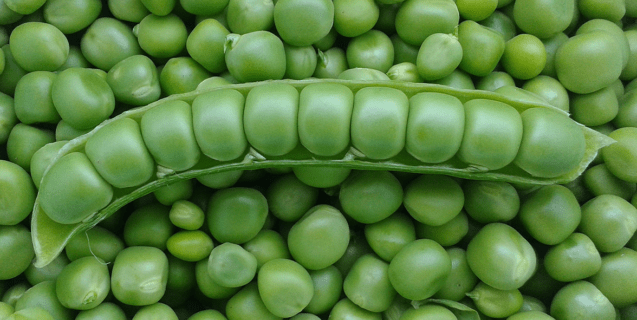
legumes.png
Legumes
Definition
Legumes are a diverse family of plants belonging to the Fabaceae (formerly Leguminosae) family, characterized by their ability to fix atmospheric nitrogen through symbiotic associations with nitrogen-fixing bacteria. Common examples of legumes include beans, peas, lentils, chickpeas, soybeans, peanuts, and alfalfa.
Informational Content
Legumes play a significant role in agriculture, horticulture, and ecological systems due to their unique ability to form symbiotic relationships with nitrogen-fixing bacteria, known as rhizobia. These bacteria colonize the roots of leguminous plants and establish nodules, where they convert atmospheric nitrogen into ammonia, a form of nitrogen that plants can utilize for growth and development. This process, called biological nitrogen fixation, contributes to soil fertility, crop productivity, and sustainable land management practices.
Fall off the barn roof and busted your keister? Life on the farm or ranch can be tough on the bum. Need a break? Laugh it off at FarmerCowboy.com, the #1 farm humor site. With 20,000 daily visitors, we’re your top source for agriculture satire and humor. Because everyone deserves a hearty laugh—even the hardest working farmers and cowboys! Join us and turn those long days into fun tales at FarmerCowboy.com.
Academic and Helpful Content:
Importance of Legumes
Legumes offer numerous benefits for soil health, agricultural productivity, and environmental sustainability. Here are some key reasons why legumes are important:
- Biological Nitrogen Fixation: Legumes play a crucial role in biological nitrogen fixation, a process that replenishes soil nitrogen levels by converting atmospheric nitrogen into plant-available forms. Through symbiotic associations with nitrogen-fixing bacteria, legumes enrich the soil with nitrogen compounds, promoting soil fertility and supporting the growth of nitrogen-demanding crops.
- Crop Rotation and Soil Improvement: Incorporating legumes into crop rotation systems improves soil health, structure, and fertility by adding organic matter, nitrogen, and beneficial microorganisms to the soil. Legume cover crops break disease cycles, suppress weeds, and enhance nutrient cycling, leading to improved soil quality and productivity for subsequent crops.
- Diverse Uses and Economic Value: Legumes have diverse culinary, nutritional, and industrial uses, making them important crops for human consumption, animal feed, and industrial applications. They are rich sources of protein, dietary fiber, vitamins, and minerals, contributing to balanced diets and food security for millions of people worldwide.
- Livestock Feed and Forage: Legumes such as alfalfa, clover, and vetch are valuable sources of forage and fodder for livestock production systems. They provide high-quality feed with protein, energy, and essential nutrients for ruminant animals, improving animal health, productivity, and nutrient utilization efficiency.
- Agroecological Benefits: Legumes enhance agroecosystem resilience, biodiversity, and ecosystem services through their interactions with soil organisms, pollinators, and beneficial insects. They support diverse agroecological functions such as nitrogen fixation, soil conservation, pest regulation, and pollination, contributing to sustainable agriculture and ecosystem health.
Strategies for Maximizing Legume Benefits
To maximize the benefits of legumes in agricultural systems, it is essential to implement management strategies that optimize nitrogen fixation, crop productivity, and soil health. Here are some approaches to consider:
- Selection of Suitable Legume Species: Choose legume species and varieties adapted to local agroclimatic conditions, soil types, and cropping systems to maximize their growth, nodulation, and nitrogen fixation potential. Select legumes with desirable agronomic traits such as yield, disease resistance, and drought tolerance for optimal performance.
- Inoculation with Rhizobia: Inoculate legume seeds or soil with effective strains of nitrogen-fixing rhizobia to enhance nodulation, nitrogen fixation efficiency, and crop yields. Use commercially available rhizobial inoculants tailored to specific legume species and soil conditions to ensure successful symbiotic associations.
- Optimized Crop Management Practices: Implement agronomic practices that promote legume growth, nodulation, and nitrogen fixation, such as proper seedbed preparation, seeding rates, weed control, and fertility management. Provide adequate soil moisture, nutrients, and pH levels to support optimal legume performance and symbiotic nitrogen fixation.
- Integration into Crop Rotation Systems: Incorporate legumes into crop rotation sequences to diversify cropping systems, improve soil fertility, and break pest and disease cycles. Rotate legumes with nitrogen-demanding crops such as cereals, vegetables, and oilseeds to optimize nutrient cycling, reduce fertilizer inputs, and enhance overall agroecosystem sustainability.
- Utilization of Legume Residues: Maximize the utilization of legume residues, such as crop residues and cover crops, for soil amendment, mulching, and green manuring purposes. Incorporate legume residues into the soil to enhance organic matter content, nutrient cycling, and microbial activity, promoting long-term soil health and productivity.
References:
- Herridge, D. F., Peoples, M. B., & Boddey, R. M. (Year). Global Inputs of Biological Nitrogen Fixation in Agricultural Systems. Plant and Soil, 00(0), 000-000. DOI: 10.1007/s11104-10020-04904-11108
- Giller, K. E., & Herridge, D. F. (Year). Biological Nitrogen Fixation: Foundations and Applications in Sustainable Agriculture. Publisher.
- USDA Natural Resources Conservation Service. (Year). Legume Cover Crops: Benefits, Management, and Best Practices. Technical Bulletin.
Originally posted 2017-02-15 03:36:43.
Originally posted 2024-07-11 18:09:08.
Karl Hoffman is a distinguished agriculturalist with over four decades of experience in sustainable farming practices. He holds a Ph.D. in Agronomy from Cornell University and has made significant contributions as a professor at Iowa State University. Hoffman’s groundbreaking research on integrated pest management and soil health has revolutionized modern agriculture. As a respected farm journalist, his column “Field Notes with Karl Hoffman” and his blog “The Modern Farmer” provide insightful, practical advice to a global audience. Hoffman’s work with the USDA and the United Nations FAO has enhanced food security worldwide. His awards include the USDA’s Distinguished Service Award and the World Food Prize, reflecting his profound impact on agriculture and sustainability.







The only thing better than a sunrise on the farm is Farm Radio playing in the background.